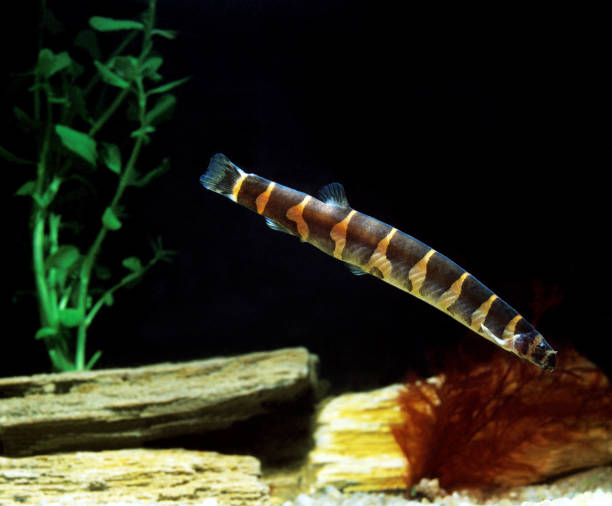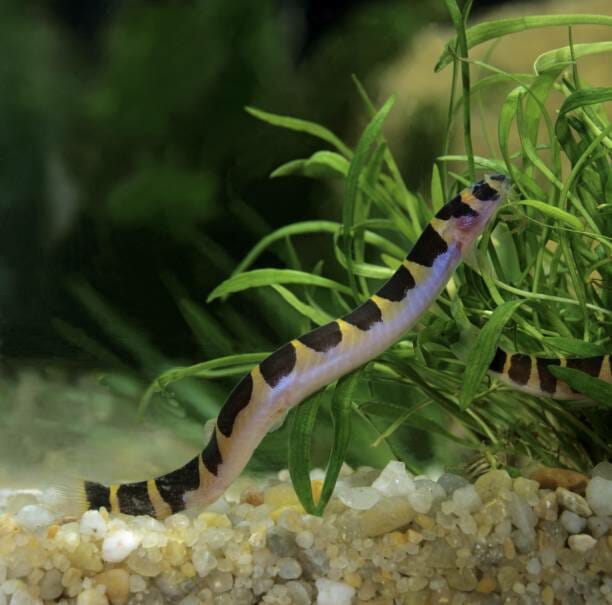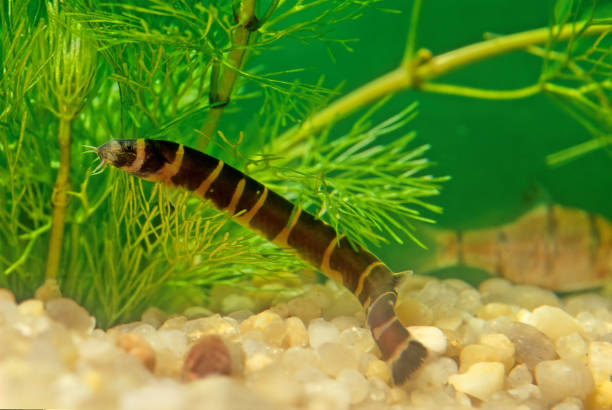Do Kuhli Loaches Eat Snails: Prevention Tips & Solutions
A kuhli loach (Pangio kuhlii) is a freshwater fish that belongs to the loach family, Cobitidae. Kuhli loaches are native to Indonesia and live in tropical rivers, lakes, ponds, and streams. They belong to the genus Pangio which contains sixteen species of freshwater fishes found in Southeast Asia.
Kuhli loaches eat snails and the best news is that they can not only eat snails but will be so happy to do it! They actively pursue them when given the opportunity. Of course, you should exercise strict caution about whether or not these are safe for your fish and snail tank in general though.

Table of Contents
Are Snails Safe for Kuhli Loaches?
Snails are considered a natural part of the aquarium ecosystem. They not only serve to complete the cycle but also will deplete algae and small organic food particles in your tank. Even though many snails may come infected with parasites, they still can be good for your kuhli loach’s diet because as long as you do not have a substantial snail population within it; there is little risk that by feeding these fish snail infested foods he will be affected by the parasites.
How to Protect Snails from Kuhli Loaches?
If you want to keep kuhli loaches with snails, then you will need to be extra careful. The snail needs plenty of space and not too much water movement. You can also provide hiding places for them such as hollow rocks or tubes, but make sure that they are not placed in areas where your fish can access them.
You can protect snails from kuhli loaches with a proper tank setup. The aquarium should be well-lit, have a filter and plenty of rocks for the fish to hide in. Many snails will hide in cracks, crevices, and under aquatic plant leaves. For this reason, it is important to keep an eye out for them during water changes. In addition, you should place a mesh screen in the tank to keep snails from escaping.
How to Control Snail Population in an Aquarium?
On the other hand, snails can also excessively inhabit your fish tank and that could be a problem. When faced with snail population issues, remember that it is a process of elimination and accounting to identify the culprits. Getting rid of one or two snails does not immediately make your tank safe from them, but over time will slowly take out their numbers for you via natural means such as maintaining water quality or chemical solutions as well.
Natural vs. Chemical
Natural remedies for the snail population in a fish tank include keeping your aquarium well lit as this will help to create the artificial conditions that snails need. You can also provide hiding places such as bat caves, crevices, and other similar areas where they can hide from view. Poor water quality is another reason why having too many snails becomes an issue; think about taking additional care of them by regularly cleaning the filter or adding more organic media to provide more food.
One of the chemical products you can use for snail control is malachite green. It works well to absorb chlorine in aquarium water and eliminate some unwanted aquatic life like gill-less snails. You will still have to research a lot before purchasing this product; get information from your local pet store or online retailers because they differ on its uptime ounces within the container ranging between 2– 3 each.
Ideal Tank Conditions for Kuhli Loach and Snails

Tank Size
Having 15 or more gallons of aquarium water for your kuhli loaches allows you to merely add healthy snails into your particular tank without any problems with their size. If you have over ten small tanks, be sure that oxygen levels are always adequate for efficient breathing and activity for the natural life within your environment as well as cleanliness so it won’t contain unwanted organisms from entering other parts at risk unless damaged first by other kinds of contamination like dead snails.
Temperature
The aquarium water must be well-established to allow the kuhli loaches and snails to stay healthy, meaning your water needs more than sufficient oxygen and cannot contain excessive ammonia levels as it can eventually lead to the death of your aquatic pets. The ideal temperature for kuhli loaches is between 75 to 86 degrees Fahrenheit (24 to 30 degrees Celsius) while the best temperature for snails is between 65 to 80 degrees Fahrenheit (18 to 26 degrees Celsius), so make sure to set the temperature where both species can thrive.
pH Level
When it comes to the pH level, 6 – 7’s preferred range with a pH of less than or equal to 7 being best, and between 8 – 9 is okay with smaller snails but larger ones need more room as they may get too large to move around nor be able to fit into tighter crevices. On the other hand, kuhli loach best survives at a pH level between 7 to 7.5.
Diet
Snail does not need much specific menu, and can also be healthy with any kind of diet you wish to add in for their particular benefits like algae pellets though it is necessary to keep them well fed daily by feeding at least twice a day or even more depending on the amount they eat while eating properly supports weight maintenance within aquarium conditions without adding additional carbon dioxide taken into consideration as this strong gas kills animals through suffocation and excess of carbon dioxide lures unwanted creatures that are ignored through safety precautions.

What Food Is Best for Kuhli Loaches?
One of the best ways to prevent kuhli loaches from eating snails is by giving them healthy food so they don’t starve and they don’t prey on snails you keep as pets.
Kuhli loaches can be fed a variety of foods including pellets, flake food, and freeze-dried bloodworms. However, the most important thing is that they get enough calcium and vitamin D3. They also need some other vitamins and minerals as well such as iodine and vitamin B12 and I would recommend supplementing with spirulina if your kuhli loaches are trouble-free.
Kuhli loaches are omnivores and can be fed almost anything. But you must feed them 1-2 times a day (or more). They will do best when offered an occasional, specific item from their staple foods such as bloodworms or small crickets.